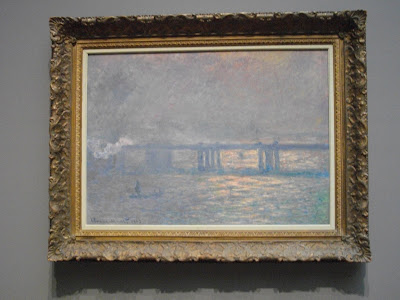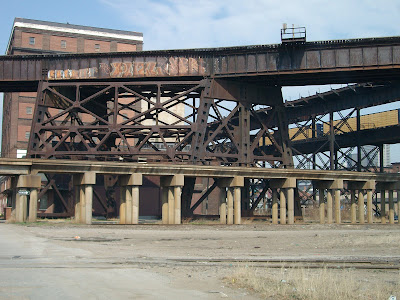Today, May 9th is
National Train Day and to celebrate here are a few photos from the
Transportation Museum in St. Louis. The museum includes a large collection of train cars of all types, a small automobile collection, a tugboat and one DC 3. But, today its all about trains.

The C&IM was never a large railroad stretching a little over 100 miles in length at its largest.

"The Cotton Belt Route" was organized on January 15, 1891, although it had its origins in a series of short lines founded in Tyler, Texas, in 1877 that connected northeastern Texas to Arkansas and southeastern Missouri.

General Motors built not only automobiles, but also train engines and busses.

The Pullman Company developed the sleeping car which carried his name into the 1980s. The labor union associated with the company, the Brotherhood of Sleeping Car Porters, was one of the most powerful African-American political entities of the 20th century, many
surviving porters were honored today for National RR Day.

Burlington Route served a large area, including extensive trackage in the states of Colorado, Illinois, Iowa, Kentucky, Missouri, Montana, Nebraska, Wisconsin, Wyoming, and through subsidiaries Colorado and Southern Railway, Fort Worth and Denver Railway, and Burlington-Rock Island Railroad, New Mexico and Texas.

Another example of the Pullman sleeping car. These cars were featured in several movies during the 1930's, 40's, and 50's.

The Chicago, Burlington and Quincy Railroad (reporting mark CBQ) was a railroad that operated in the Midwestern United States. Commonly referred to as the Burlington or as the "Q."

From the 1930s until 1989 the Budd Company was a leading manufacturer of stainless steel streamlined passenger rolling stock for a number of railroads. This is the Budd "Silver Spoon" dining car.

The Chesapeake and Ohio Railway was a Class I railroad formed in 1869 in Virginia from several smaller Virginia railroads begun in the 19th century.

Gulf Mobile & Ohio engines and passenger cars were featured in the 1967 film
In the Heat of the Night.

The "Abe Lincoln" ran between Chicago and St. Louis on the B&O's subsidiary Alton Railroad. The train later passed to the Gulf, Mobile and Ohio Railroad, and then finally to Amtrak, which retained the name until 1978. Service between Chicago and St. Louis is now known by the umbrella term "Lincoln Service".

General American Tank Car Corporation was one of the largest companies to build and lease specialty cars to railroads.

The Milwaukee Railroad, often called the North Shore Line, was an interurban railroad line that operated between Chicago, Illinois, and Milwaukee, Wisconsin, until its abandonment in 1963.

Can anyone explain this sign to me, so I can explain it to my teenage son! It does seem to be good parental advice.

This is a giant snow blower car. The deisels were used to spin the snow blades while other engines pushed it along.
Finally, one more from the Transportation Museum, we couldn't leave without seeing the $100,000.00 Bobby Darrin car, a one-of-a-kind custom car designed by Detroit clothing designer Andy Di Dia in 1953 and completed in 1960.














































